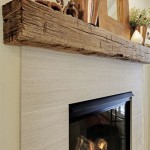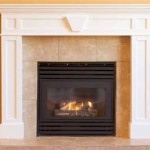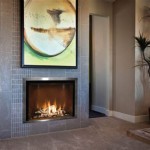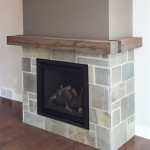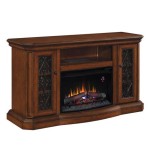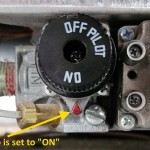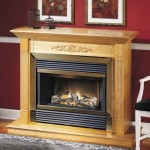Propane Fireplaces on Wood Decks: A Comprehensive Guide
A propane fireplace can be a beautiful and warm addition to any outdoor space, especially a wood deck. They offer the ambiance of a traditional wood-burning fireplace without the hassle of chopping wood, dealing with ash, or the risk of flying embers. However, installing a propane fireplace on a wood deck requires careful planning and adherence to safety regulations. This guide will delve into the key considerations and steps involved in safely and effectively installing a propane fireplace on a wood deck.
Safety First: Understanding the Risks
Wood is a flammable material, and the heat generated by a propane fireplace presents a potential fire hazard. Before embarking on the installation process, it is crucial to understand the inherent risks and take appropriate preventative measures. The primary concerns include:
- Combustible Materials: The wood deck itself is susceptible to catching fire if it is not adequately protected from the heat of the fireplace.
- Propane Leaks: A leak in the propane line or appliance could lead to a fire or an explosion.
- Improper Installation: Insufficient clearance around the fireplace, faulty venting, and incorrect connections can all contribute to safety hazards.
To mitigate these risks, it is paramount to follow all local building codes and fire safety regulations. Consult with a qualified professional, such as a certified propane installer or a licensed contractor, before beginning any work. They can assess the specific requirements for your location and ensure compliance with safety standards.
Choosing the Right Fireplace and Location
There are numerous propane fireplaces available, ranging from freestanding units to built-in models. The specific type you choose will depend on your personal preferences, the size of your deck, and the desired aesthetic. When selecting a fireplace, consider the following factors:
- Size and Capacity: Choose a fireplace with an output that is suitable for your deck size and intended use.
- Fuel Consumption: Determine the propane consumption rate and factor it into your budget.
- Design and Features: Select a style that complements your deck and offers the features you desire, such as a built-in grill, a fire pit, or a remote control.
- Safety Features: Look for features such as automatic shutoff valves, flame-out detection, and a safety screen.
Once you have chosen a fireplace, you need to decide on its location. Ideally, it should be placed in a well-ventilated area away from any flammable materials. Consider the proximity to surrounding structures, the direction of prevailing winds, and the potential for accidental contact. Consult with your contractor to determine the optimal placement for your specific deck configuration.
Installation Process and Required Materials
The actual installation process involves several crucial steps, including:
- Prepare the Deck: Ensure the deck is structurally sound and free of any loose boards. You may need to reinforce the deck surface to support the weight of the fireplace.
- Create a Base: Construct a solid base for the fireplace, using concrete, pavers, or a non-combustible material like firebrick. The base should be large enough to accommodate the fireplace and provide adequate support.
- Install the Fireplace: Follow the manufacturer's instructions for installation, including the proper clearances from combustible materials.
- Connect the Propane Line: Run a dedicated propane line from a source to the fireplace. This line should be installed by a certified propane installer and must meet all applicable codes and regulations.
- Vent the Fireplace: Install a vent according to the manufacturer's instructions and local codes. Venting is essential for removing combustion byproducts and preventing the buildup of carbon monoxide.
- Inspect and Test: Once the installation is complete, have a certified propane installer inspect the entire system to ensure that it is safe and functioning properly.
You will need various materials for the installation, including:
- Propane Fireplace: The specific model will depend on your chosen type and size.
- Base Materials: Concrete, pavers, or firebrick, depending on your preferred base construction.
- Propane Line: A dedicated propane line, typically made of black iron pipe or copper tubing.
- Venting Materials: Vent pipe, vent cap, and other necessary components. The type of vent system will vary depending on the fireplace model and local codes.
- Tools and Supplies: A variety of tools, such as a level, measuring tape, drill, and safety equipment.
Remember: Always prioritize safety and follow the manufacturer's instructions and local regulations when installing a propane fireplace on a wood deck. If you are not comfortable with the installation process, it is best to hire a qualified and experienced contractor to handle the work.

The Best Gas Fire Pits For Decks Woodlanddirect Com

Can I Put My Gas Fire Pit On Deck

Can I Put A Fire Pit On My Wood Deck Woodlanddirect Com

Can I Put A Fire Pit On My Wood Deck Woodlanddirect Com

Can You Have An Outdoor Fireplace On A Deck

Around The Campfire Choosing Best Small Fire Pits For Decks Diamond
Fireplaces For Decks Colorado Springs Outdoor Deck Fireplace

Diy Propane Fire Pit Brick Concrete Patio Design Ideas Deck Outdoor On Wood

Outdoor Fireplace On Wood Deck With Deckorator Baers

Can I Put A Fire Pit On My Wood Deck Woodlanddirect Com
Related Posts

